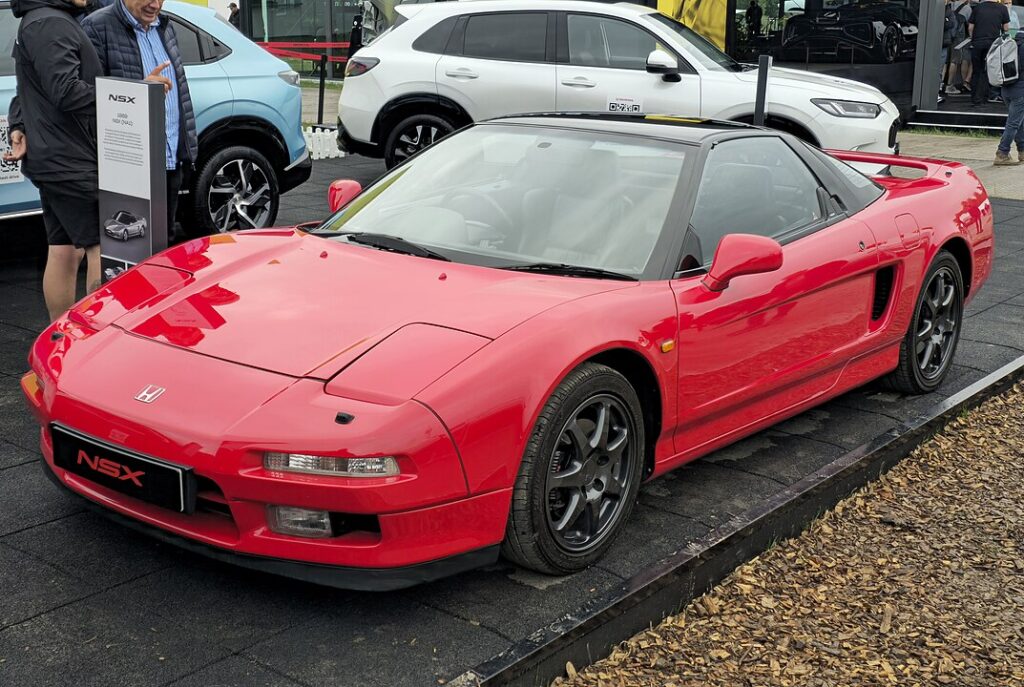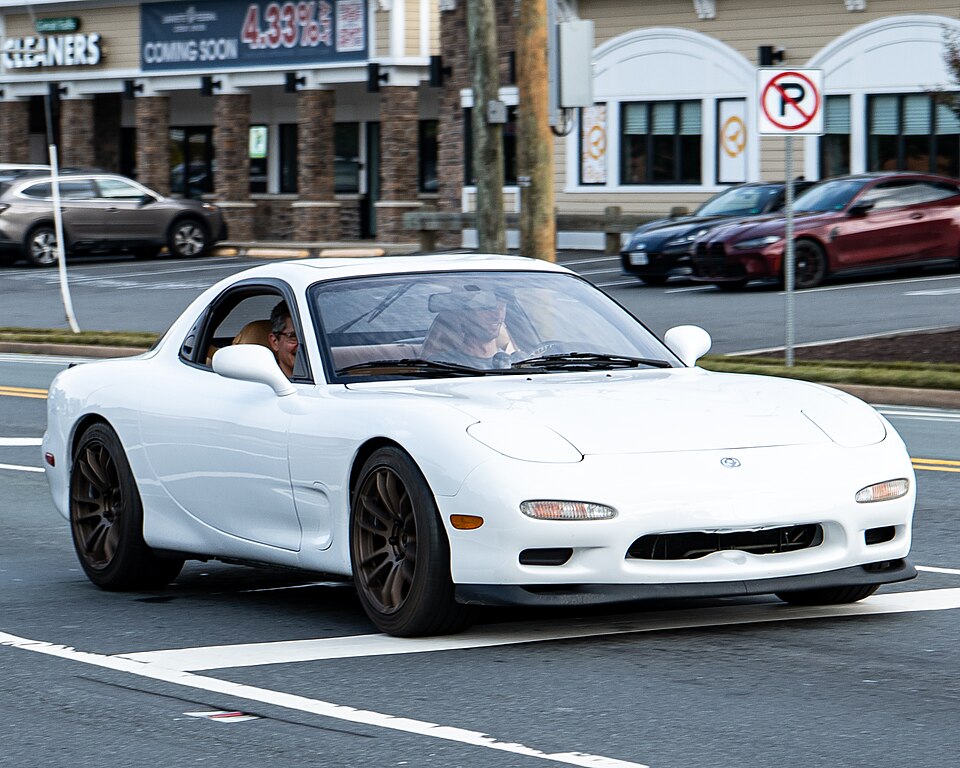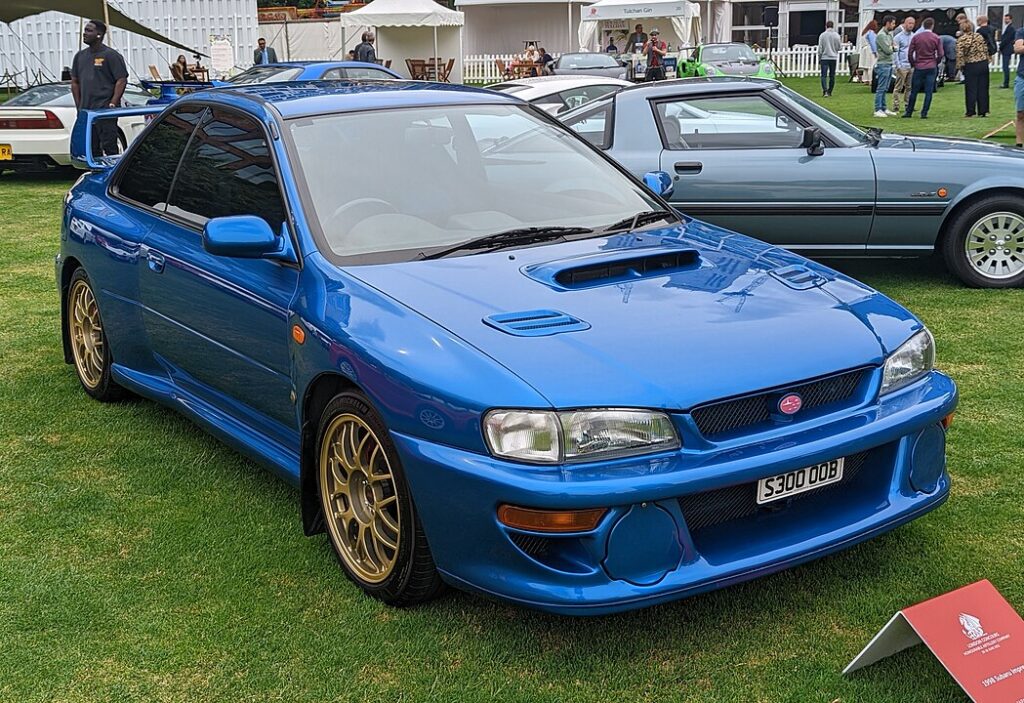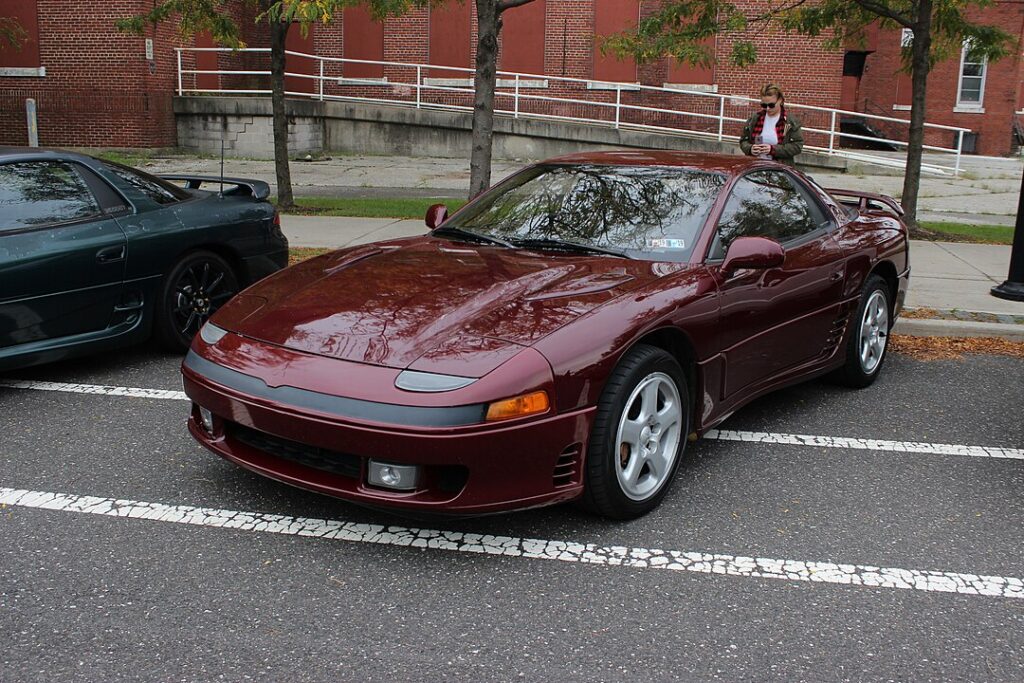11 Rare Japanese Sports Cars Rising in Value
Japanese sports cars have always captivated enthusiasts with their performance, design, and unique engineering. Over the years, many models have become highly sought after by collectors, driving their values higher. Whether it’s the legendary Nissan Skyline GT‑R, the iconic Toyota Supra, or the rare Mazda RX‑7, these cars continue to appreciate in price. As the demand for well-preserved, low-mileage examples grows, these vehicles are becoming prized assets in the world of automotive collectors. If you’re looking to invest in a piece of automotive history, these rising stars in the Japanese car market are worth keeping an eye on.
This post may contain affiliate links, which helps keep this content free. Please read our disclosure for more info.
Toyota 2000GT

The Toyota 2000GT is a masterpiece of Japanese automotive engineering and design, often referred to as Japan’s first true sports car. Produced from 1967 to 1970, it was built in extremely limited numbers, with only 351 units ever made. The 2000GT was a significant step for Toyota, showcasing its ability to design high-performance vehicles that could compete with European manufacturers like Ferrari and Porsche. Its sleek design and advanced technology, including a 2.0-liter inline-six engine capable of 150 horsepower, set it apart from its contemporaries. As the years go by, its rarity and status as a pioneer in Japan’s sports car history have made it a sought-after gem for collectors.
Today, the Toyota 2000GT’s value continues to rise, driven by its combination of scarcity, design, and historical significance. The car’s allure is not just about the number of units produced but also its connection to the broader shift in automotive culture during the 1960s. As more collectors and enthusiasts recognize the significance of the 2000GT, its prices have surged. Given its legacy in the Japanese automotive scene, it’s expected to continue gaining in value, particularly as fewer well-maintained examples are found.
Nissan Skyline GT‑R (especially R32, R33, R34, and earlier)

The Nissan Skyline GT‑R has become a symbol of high performance, especially with the introduction of the R32 in 1989, which was dubbed the “Godzilla” of the car world due to its dominance in motorsport. Nissan’s Skyline GT‑R was more than just a performance vehicle; it was a technological marvel for its time. It featured advanced all-wheel drive, a turbocharged engine, and a sophisticated ATTESA E-TS system for handling, making it a standout in both rallying and touring car racing. The R32’s combination of innovation and performance quickly earned it a legendary status in Japan and beyond.
As time passed, models like the R33 and R34 continued to build on the success of the R32, improving on handling, refinement, and power, while maintaining the GT‑R’s connection to motorsport. These later models are highly prized by collectors due to their rarity, with clean, low-mileage examples becoming harder to find as the years go by. As the world continues to embrace 1990s JDM cars, the Skyline GT‑R, especially the R34, is quickly becoming a valuable collector’s item. The car’s iconic status, paired with increasing demand and fewer examples on the market, ensures that its value will keep rising in the coming years.
Honda NSX

The Honda NSX, often called the Japanese Ferrari, was designed to challenge European supercars while delivering the reliability and practicality Honda was known for. Debuting in 1990, the NSX was a revolutionary car for its time, featuring a mid-engine layout, an all-aluminum body, and a V6 engine that delivered a perfect blend of performance and usability. Honda worked with Formula 1 legend Ayrton Senna to refine the car’s handling, making it not only fast but also highly agile. This collaboration gave the NSX a unique performance edge, setting it apart from other sports cars of its era.
Over the years, the NSX has become an iconic collector’s car, and its value has steadily increased. The early models, particularly the first-generation ones, are now increasingly rare, and finding one in pristine condition has become a challenge for enthusiasts. The NSX’s combination of stunning looks, advanced engineering, and motorsport pedigree makes it highly desirable in today’s market. As the car enters classic status, more collectors are beginning to recognize its place in automotive history, contributing to a rise in value that is expected to continue.
Mazda RX‑7

The Mazda RX‑7, particularly the third-generation FD model, is a car that continues to capture the imagination of car enthusiasts due to its unique rotary engine, which provides a distinctive driving experience unlike any other car on the market. Introduced in 1978, the RX‑7 was lightweight, agile, and incredibly fast for its time. However, it was the FD generation, produced from 1992 to 2002, that truly solidified the RX‑7’s place in sports car history. With a turbocharged, twin-rotor engine that produced up to 276 horsepower, the RX‑7 offered excellent handling and performance that rivaled more expensive European cars. Its sleek, aerodynamic design and the use of cutting-edge technology made it a standout in the world of Japanese sports cars.
As the RX‑7 moves into classic territory, its value has been climbing, especially for well-maintained FD models. The scarcity of unmodified or low-mileage RX‑7s makes them increasingly valuable, and as interest in JDM cars grows, the RX‑7 is a sought-after model for collectors and enthusiasts alike. The car’s unique rotary engine and reputation for being one of the best-handling cars of its time make it a prime candidate for appreciation in value. As fewer original examples remain and the demand for rotary-powered vehicles increases, the Mazda RX‑7 is becoming one of the more valuable Japanese sports cars on the market.
Subaru Impreza 22B STi

The Subaru Impreza 22B STi is a car that carries a special place in the hearts of rally fans and performance enthusiasts alike. Built to celebrate Subaru’s success in the World Rally Championship, the 22B STi was produced in limited numbers in 1998, with only 424 units made. Its turbocharged 2.2-liter flat-four engine, paired with all-wheel drive, made it a formidable performer both on and off the road. The 22B was a true homologation special, designed to meet the requirements for rally racing, and it featured numerous upgrades over the standard Impreza, including enhanced suspension and unique body styling.
Given its limited production and strong motorsport connections, the 22B has become one of the most desirable Japanese performance cars on the market. The car’s rally heritage, combined with its relative rarity, has contributed to a steady rise in its value. As Subaru enthusiasts and collectors seek to own a piece of rally history, the 22B has gained significant attention, and its value continues to climb. With fewer pristine examples available and demand growing, the 22B is expected to be a major player in the collector car market for years to come.
Mitsubishi Lancer Evolution (Tommi Mäkinen Edition)

The Mitsubishi Lancer Evolution, specifically the Tommi Mäkinen Edition (TME), is one of the most revered rally-inspired sedans ever produced. The TME, named after the famous rally driver, was a limited-production model that was introduced in 2000 as part of the Evo VI lineup. It was designed to be the ultimate expression of Mitsubishi’s motorsport capabilities, featuring a more powerful turbocharged engine, reinforced chassis, and unique styling elements. The Evo VI TME was built with rally enthusiasts in mind, offering exceptional handling and performance that made it a favorite in the world of motorsport.
As one of the last true homologation models, the Lancer Evolution VI Tommi Mäkinen Edition has seen its value increase significantly over the years. With its strong connection to the World Rally Championship, limited production, and iconic status within the JDM community, the TME has become a collector’s item. The rarity of well-maintained examples, especially those with low mileage, has driven up prices. As interest in JDM cars continues to rise, the TME is poised to see its value continue to grow, with collectors eager to own a piece of Mitsubishi’s motorsport legacy.
Toyota Supra (MK4 and GR Supra)

The Toyota Supra has long been a symbol of Japanese performance, but the MK4 model, produced from 1993 to 2002, has especially seen a resurgence in value in recent years. Known for its iconic styling and powerful 2JZ engine, the MK4 Supra was a highly tunable sports car that attracted both enthusiasts and racers alike. Its turbocharged version, capable of producing over 280 horsepower, became legendary for its performance and durability. As the Supra became a favorite in the tuning community, its reputation grew, and it appeared in movies like The Fast and the Furious, which helped cement its place in pop culture.
The MK4 Supra’s value has steadily risen as demand for clean, low-mileage examples has increased. As collectors look for cars with a strong connection to the 1990s performance era, the MK4 is a top choice. With the recent release of the GR Supra, Toyota has reignited interest in the Supra nameplate, leading many to revisit the classic MK4. As the GR Supra garners attention, the earlier MK4 models have gained a renewed following, making it one of the most sought-after JDM cars on the market today.
Nissan 350Z

Introduced in 2002, the Nissan 350Z quickly became a modern icon of Japanese sports cars. As the successor to the 300ZX, the 350Z retained the same rear-wheel-drive layout and focused on providing a balance of performance, styling, and affordability. Powered by a 3.5-liter V6 engine, it offered impressive horsepower and torque, making it a true competitor to other sports cars in its price range. The 350Z’s aggressive yet refined design, paired with solid handling and reliable performance, made it an instant hit among driving enthusiasts.
As time has passed, the 350Z has become a desirable collector’s car, particularly for those interested in affordable entry-level sports cars. Well-maintained, low-mileage examples are becoming harder to find, which is driving up their value. The 350Z’s potential for modification and its growing cult status among car enthusiasts add to its appeal. As the model enters classic territory, interest in the 350Z is expected to increase, especially as more rare and original versions emerge.
Subaru WRX STI (early models)

The Subaru WRX STI, particularly early models from the 2000s, has gained a loyal following due to its rally-inspired design and robust performance. These cars were created for the World Rally Championship, featuring a turbocharged 2.5-liter flat-four engine and all-wheel drive, allowing them to excel on both dirt and tarmac. The WRX STI’s performance and rally pedigree, coupled with Subaru’s strong motorsport heritage, made it an instant favorite among driving enthusiasts. The STI offered a thrilling driving experience, with sharp handling and a distinctive boxer engine note, which made it stand out among other performance sedans.
As Subaru enthusiasts seek to preserve these rally legends, the early WRX STI models have begun rising in value. The combination of a relatively low production number, their connection to Subaru’s rally success, and the growing nostalgia for early 2000s performance cars has made them increasingly desirable. Clean examples with low mileage and original modifications are particularly prized, and as demand grows, the WRX STI’s market value is expected to continue its upward trajectory. This car has become a symbol of raw driving fun, and collectors are eager to add a piece of Subaru’s rally legacy to their garages.
Nissan Silvia S15

The Nissan Silvia S15, produced between 1999 and 2002, has become a favorite among JDM enthusiasts, especially due to its sleek design and drift-ready performance. Known for its balance and rear-wheel-drive layout, the S15 gained recognition as a highly tunable sports car. Powered by a turbocharged SR20DET engine, it offered solid power and exceptional handling, making it a staple in motorsport circles. The S15’s lightweight construction and responsive chassis made it an ideal car for drifting, a motorsport where the Silvia became legendary.
In recent years, the Nissan Silvia S15 has risen in value due to its growing status as a classic JDM car. With its clean, aggressive lines and excellent aftermarket support, it has earned its place among the most desirable Japanese sports cars of the late 90s and early 2000s. Fewer examples of the S15 are available, especially those in unmodified, original condition. As interest in JDM classics continues to rise, the S15’s market value is expected to keep increasing, making it a smart investment for car collectors.
Mitsubishi 3000GT VR4

The Mitsubishi 3000GT VR4 was one of the most technologically advanced Japanese sports cars of the 1990s. It featured all-wheel drive, active aerodynamics, and a twin-turbocharged 3.0-liter V6 engine that produced 300 horsepower, making it a true performance powerhouse. With its high-tech features, including electronically controlled suspension and all-wheel drive, the 3000GT VR4 offered a unique driving experience that stood out in the world of Japanese sports cars. The car was built with an emphasis on both performance and comfort, which set it apart from its contemporaries.
As the 3000GT VR4 enters classic car territory, its rarity and technological innovations have made it a sought-after collector’s item. Its value is rising due to the decreasing availability of well-maintained examples, especially those with the full range of features that the VR4 offered. Enthusiasts who appreciate its blend of performance and luxury are willing to pay a premium for a clean, low-mileage model. With the growing interest in 1990s Japanese performance cars, the Mitsubishi 3000GT VR4 is likely to see its value continue to climb as more collectors recognize its significance in automotive history.
This article originally appeared on Avocadu.
